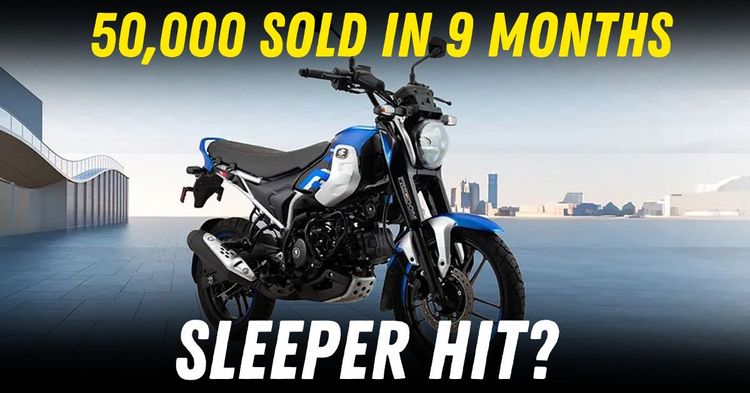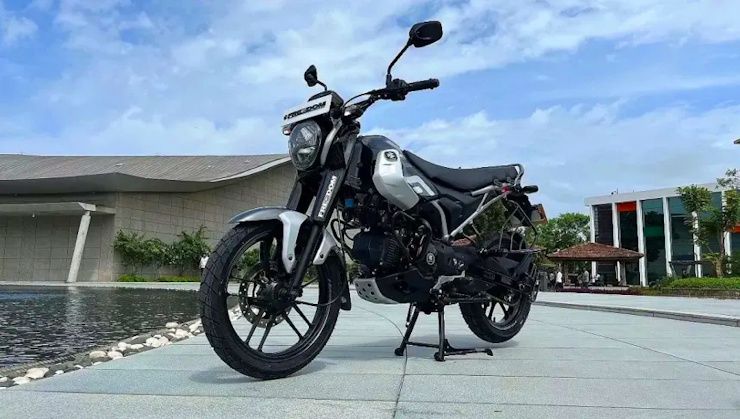Bajaj’s Freedom 125 CNG Motorcycle: Flop Or Sleeper Hit?


When Bajaj Auto launched the Freedom 125 CNG motorcycle in July 2024, it was hailed as a bold step toward redefining commuter mobility. Nine months and 50,000 units later, opinions remain divided. Is this a meaningful shift in two-wheeler innovation or simply a high-profile detour? A closer look at the market response, infrastructure constraints, and Bajaj’s broader strategy offers a more nuanced answer.
At face value, the Freedom’s sales performance seems modest. Averaging around 5,500 units per month, it pales in comparison to mainstream offerings like the Pulsar 125, which consistently sells over 50,000 units monthly. But comparisons to mass-market petrol bikes miss the point.
The Freedom 125 is the world’s first production CNG motorcycle, designed not for everyone but for a very specific user base. Its strongest sales have come from areas where CNG infrastructure is well-developed. Maharashtra, Gujarat, and Delhi NCR alone account for over half its total volume. This isn’t a case of nationwide underperformance, but a targeted rollout aligned with fuel availability.

Electric two-wheelers, even with years of policy support and financial incentives, make up less than 2 percent of total two-wheeler sales in India. In contrast, a CNG motorcycle with no subsidies capturing 0.6 percent of Bajaj’s domestic volumes in less than a year is far from insignificant.
The key selling point of the Freedom 125 is its low running cost. Bajaj claims fuel expenses are nearly halved compared to petrol bikes. For high-mileage commuters, the savings are real. A user travelling 50 km daily could save over ₹1,000 per month, a compelling figure in India’s cost-conscious commuter segment.

But those savings come with trade-offs. The engine, tuned for efficiency over performance, struggles beyond city speeds. The added weight from the dual-fuel setup affects agility. Refuelling also poses challenges, with long queues at CNG stations that often cater to cars and autos as well. And the price premium of ₹15,000 to ₹30,000 over comparable petrol bikes means that only heavy users will truly benefit in the long run.
There’s more to this launch than immediate volumes. By entering the CNG space early, Bajaj gains critical learning about alternative fuel integration and user behaviour. As petrol prices climb and emission regulations tighten, such groundwork could pay off.
The Freedom is also part of a larger strategy. Bajaj is reportedly exploring exports to Southeast Asia and Africa, regions with better CNG infrastructure than India. Early adoption in these markets could allow the company to establish itself before competitors catch up. There are also signs that rivals are warming to the idea of CNG motorcycles, indicating that Bajaj’s move may have been prescient.
Furthermore, the company is positioning itself to benefit if India’s gas infrastructure improves. With over 17,000 new CNG stations planned by 2030, the addressable market for such vehicles will only grow.
Despite the promise, significant challenges remain. Electric scooters are becoming more viable with better range and lower operational costs, even if charging remains a pain point. Rising global natural gas prices have also pushed up CNG rates, narrowing the price gap with petrol. Meanwhile, the Freedom’s lack of key features like ABS and its utilitarian styling may fail to attract younger, style-conscious buyers.
The Freedom 125 was never meant to dethrone petrol bikes overnight. It was always a measured, experimental product aimed at a specific slice of the market. Judged by that standard, it has delivered proof of concept. The question now is whether Bajaj can evolve the product, expand its footprint, and stay ahead of a market that is increasingly being pulled in the direction of electrification.
Fifty thousand units may not seem like much, but in the context of a pioneering technology, it’s a strong signal that there is space for alternative fuel bikes. For now, the Freedom 125 is neither a breakout success nor a commercial failure. It’s a smart bet in a slowly changing game - and that in itself may be its biggest achievement.